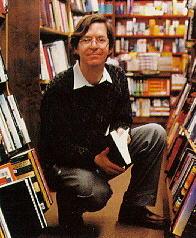Claude Meacham Watson
(July 30, 1922 to August 26, 2013) is the reason that my present wife and I met, and, ultimately, had a baby, and careers.
 |
| Claude M . Watson |
In the summer of 1977, Star Wars was new. People tried to set
Guinness-type records by seeing it dozens or hundreds of times. I had taken a
class in computer programming taught by Claude Watson in the Winter ’77 quarter
and I enrolled in it again for the Fall. I also had a subscription to Industrial Research & Development
magazine. I filled out a bingo card for some kind of equipment or other and had
the literature sent to “Obi Watson
Kenobi” at Lansing
Community College
Actually, at 55 then, far
from deficient, Claude was clairvoyant in his perceptions. He was an early
advocate for personal computing. He already had arranged for the science department to
acquire a Hewlett Packard 9815 “desktop calculator” in 1976. Later, they acquired an IBM 5100 desktop computer (programmable in BASIC and APL) and then a
Hewlett Packard 9830 “desktop calculator” programmable in BASIC with a full ASCII keyboard, and an X-Y pen plotter. Realize that Apple
Computer was incorporated on January 3, 1977. Steve Wozniak had been an intern
at Hewlett Packard and knew to ask if his project would interfere with one of
their markets.
 |
| VAX manager Philip A. Dawdy and micro technician Geoffrey J. Rarick circa 1990. |
 |
| Earl R. Youngs c. 1991 |
After returning to Lansing Elizabeth
Under Claude’s quiet
leadership, the LCC Arts & Science division installed a Commodore Pet
network. Then, they
acquired a DEC VAX. In the meantime, I worked as a
programmer and technical writer around Lansing TeX TeX TeX TeX. TeX.
 |
| Elizabeth M. Youngs c. 1998 |
Claude told me that he grew up on a farm,
and hated country life. [According to his wife, the story is somewhat more nuanced:
Lansing Community College
"The only thing you wrote that I would differ about was why he joined the military. He had graduated from high school at age 16, and had already been working for a local dairy owner since maybe the 8th grade when he was offered a job helping to deliver milk at 25 cents/day. You took it into the home and put in in a family's ice box. The dairy owner had no children and seemed to have "adopted" Claude, who was feeling somewhat trapped in the job when one of his classmates came home on leave, in Claude's words "extolling the virtues of the military." His friend had just served in Hawaii and was being sent next to the Philippines. His friend ultimately was captured by the Japanese and spent the war in a Japanese prison camp. Claude and another friend hitchhiked to Chicago to enlist, intending to use the combined radio and photography experience they planned to gain to adventure sail after their enlistment was up. Instead WWII intervened."On March 7, 1941, he enlisted in the Army Air Corps. He learned radio operations and maintenance. After the War, he completed a master of science degree in physics. His thesis was “Demonstration of Fresnel Interference by Means of a Ripple Tank”; and it presaged his passion for teaching. He was hired by





















